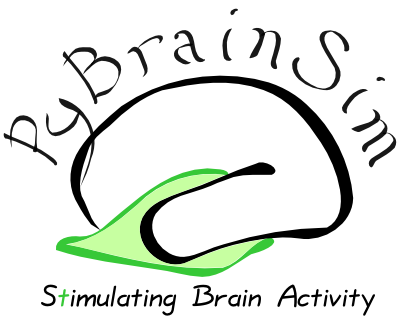

This tool is currently in early stages of development as part of a PhD project at the University of Stirling, in collaboration with the University of Edinburgh. If you're interested, here's our Roadmap. It's quite outdated at the moment, but reflects some of our plans and should get an update soon.
In the meantime you can contact us by writing to one of our mailing lists:
PyBrainSim-Devel: If you're interested in helping out or our plans for the future.
PyBrainSim-Users: If you're interested in the functionality this project intends to provide.
If you're interested in keeping track of what's going on, you're welcome to subscribe to our PyBrainSim-Activity mailing lists, where all changes to our issue tracker pages and all commit information are posted. Be warned this is a heavy traffic list.
08 November 2010: Added below missing pieces of news from the summer and modified the introduction on this page to better reflect the current state of the project, as the corresponding PhD project starts.
30 June 2010: Generators are now dipoles in a single conducting sphere. Added an example to the PyBrainSim script that shows the activity of differently oriented dipoles as it would show on the scalp.
15 August 2009: Spherical head model milestone completed. Generator and registration site positions now matter when using this new head model - recorded activity is lower depending on distance between the generator and the registration site. A new interesting example is added to the PyBrainSim script to showcase this new feature with three registration sites and two sine generators.
07 August 2009: Modelling phase resetting milestone completed. An example simulation can now be invoked from the PyBrainSim script that shows the output of a hundred sinusoidal generators of different frequencies, some of which are connected to a stimulus. This simulation already gives a nice ongoing signal, that looks similar to EEG and an event-related potential with very nice peaks!
06 August 2009: Activity plots milestone completed - the generated ongoing activity and the simulated event-related potential can now be plotted.
29 July 2009: Another milestone completed, we now have a sine generator.
27 July 2009: The text on this website has been updated, as all the promised design information is now in the Roadmap.
27 July 2009: Milestones in the Roadmap have been updated with deadlines and many detailed tasks - we're one task short of a hundred.
27 July 2009: First milestone completed - the skeleton of the simulations framework is now mostly in place, ready for more interesting simulations.
16 July 2009: First code commited to repository, with two classes, Head and Generator, and a demo script. Some of the intended structure of the classes is already present... even though all the demo is capable of now is producing a list of integers from one to a given integer number. But still - first commit, closing some tasks!
15 July 2009: Deadlines put on first few milestones and more fine-grained tasks published in the issue tracker.
30 April 2009: Updated the related projects list.
24 April 2009: Added Data Viewer 3D to the related projects list.
24 April 2009: Updated the roadmap.
15 April 2009: Created a logo and added it to the top of this page.
13 April 2009: Created a page in the trac wiki for listing Related projects, providing the first few links and descriptions.
11 April 2009: Added two new early milestones.
11 April 2009: Investigating changing the look of the issue tracker on sourceforge.net. We could use it's wiki for the project web space, however the default look might immediately scare away many potential users. This seems to be a problem for many, some relevant requests can be found in the sourceforge.net issue tracker: ID 2517191, ID 2663818, ID 2688871, ID 2708143, ID 2722324, ID 2741371.
11 April 2009: Added activity mailing list, for commits, tracker updates and possibly other activity updates, so that it's easy to track the project's progress with this one tool.
9 April 2009: All milestones now have short descriptions.
7 April 2009: Meeting at University of Stirling, discussing web site and soon to be posted milestones.
6 April 2009: First two milestones added to the issue tracker, more to follow.
6 April 2009: Added an issue tracker (trac).
6 April 2009: Created users and devel mailing lists.
6 April 2009: These pages will fill with design documents soon, please check back in a few days.